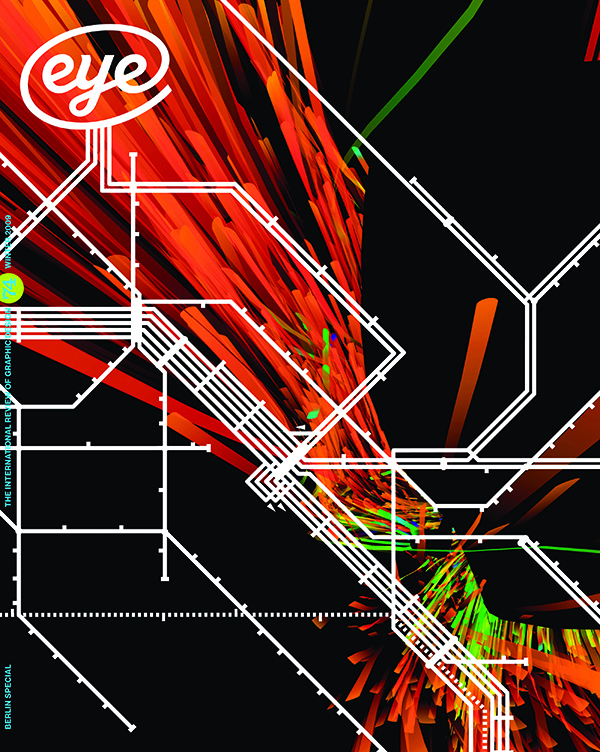Winter 2009
Editorial Eye 74
John L. Walters
various designers
Onlab
Siggi Eggertsson
Erik Spiekermann
Verena Gerlach
chezweitz & roseapple
Welcome to Eye’s Berlin special. We have always been fascinated by the once divided city, and many of writers, friends and readers live there. But this is not a travelogue, a tourist guide or a document meant to promote Berlin’s creative economy.
For the most part, our highly partial, non-official story of Berlin is told through the eyes of Berliners themselves, whether they’re Berlin-born, such as type designer Verena Gerlach, or incomers such as Jan Middendorp, Nicolas Bourquin or Siggi Eggertsson.
Eye 74 is about more than a single city, however. There’s an argument for saying that the entire issue is about technology, from letterpress to digital code. The ever-changing Berlin of today is built on technology, from the techno music that soundtracked its early 1990s rebirth to the high-speed internet connections that keep its creative workers linked to the rest of the world. Since Berlin is a city with little conventional industry – ‘poor but sexy’ in the words of its charismatic mayor – its designers and illustrators work largely for outside clients, while enjoying the city’s cultural activity and open spaces.
After all, it has been argued that communication technology was one of the key elements that made the Old World Order unsustainable, leading to the collapse of the Eastern Bloc and the dismantling of the Berlin Wall. In the ‘Reputations’ interview, Karsten Schmidt – not from Berlin but born and educated in East Germany – recalls seeing advertisements for computers on West German TV, which he and his family watched illegally in the late 1980s on their state-made receiver.
Yet Schmidt himself is a product of both systems, with a rigorous and broad-based East German education that has made him ideally prepared to grasp the technological and creative challenges of the new century – from the dotcom boom to the semantic Web.
For our ‘Berlin snapshots’ we found designers who had something to say about Berlin in both work and words – and we’ll be showing much more on the Eye blog in the weeks to come.
As well as the snapshots, we have focused on some prolific studios and individuals: chezweitz & roseapple, Nicolas Bourquin’s Onlab and Erik Spiekermann, whom we profile with a timeline that traces his work, clients, publications and typefaces over the past 30 years.
This year marks two decades since the fall of the Wall, but there’s another anniversary pertinent to this issue. It was twenty years ago that Alan Kitching set up The Typography Workshop, and, in Derek Birdsall’s words, ‘breathed life into the dying embers of letterpress.’ Five years later, Alan met Celia Stothard, embarking on a life and work partnership that has produced the prints shown in ‘The show must go on’. Stothard explains how she and Alan came to acquire the massive ‘Wrington collection’ of theatrical wood type, which we see in photographs of their Kennington studio and printshop by Phil Sayer. JLW
John L. Walters, editor of Eye, London
First published in Eye no. 74 vol. 19, 2009
Eye is the world’s most beautiful and collectable graphic design journal, published for professional designers, students and anyone interested in critical, informed writing about graphic design and visual culture. It is available from all good design bookshops and online at the Eye shop, where you can buy subscriptions and single issues.

